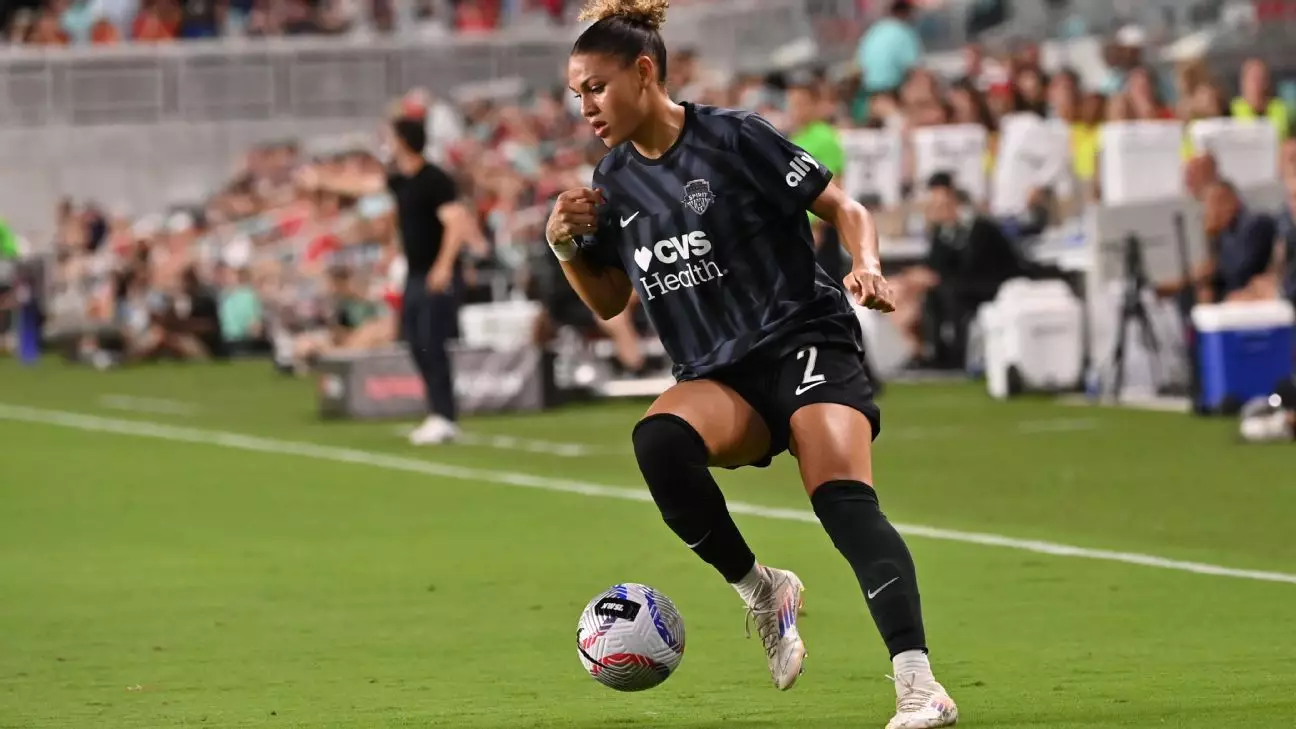The anticipation surrounding the U.S. Women’s National Team (USWNT) is palpable as forward Trinity Rodman makes her highly anticipated return to the squad. After a commendable Olympic gold medal run in August, her absence has been felt not only by the team but also by fans yearning for her electrifying presence on the field. With the upcoming friendly matches against Brazil on April 5 and April 8, it serves as a pivotal moment for Rodman, who steps back into a lineup that seeks to rejuvenate its competitive edge.
Recovery from injuries can be a taxing journey for any athlete, and Rodman’s battle with back pain has momentarily sidelined her. Her return to the Washington Spirit for the first time since the NWSL Championship demonstrates not just resilience but also ambition. She showcased her potential to affect the game even as she entered in the latter stages of a defeat, almost equalizing instantly, despite the goal being overturned after a video review.
A Young and Eager Squad
USWNT coach Emma Hayes boasts a roster brimming with young talent, echoing her commitment to building a future-ready team as they eye the 2027 World Cup. With eleven players bearing fewer than ten caps and an average age of just 25.3, she is cultivating an environment ripe for growth and innovation. Each athlete faces a formidable challenge: to earn their place and establish their role within the team. Hayes articulated this urgency correctly, asserting, “All of the players know they have to earn every roster spot.” This survivalist mentality fosters internal competition, ensuring that each athlete continually strives for improvement.
Among the notable young talents returning is 17-year-old midfielder Lily Yohannes, whose performance at the SheBelieves Cup caught the attention of many despite the team’s struggles. The inclusion of various other young players, like 19-year-old Claire Hutton and first-time call-up Avery Patterson, signals a departure from relying solely on established stars and steers the team toward a more sustainable future.
Embracing Change and Creating Opportunities
With the dynamic landscape of women’s soccer constantly evolving, Hayes’s focus on integrating lesser-known talents reflects a strategic pivot. It’s a testament to her belief in potential over pedigree, nurturing a diverse range of skills that could prove essential on the global stage. This fresh approach allows the USWNT to redefine its identity, positioning itself for success in a competition that is becoming increasingly fierce.
Moreover, by reintroducing players who had previously been absent since Hayes took the helm, like center-back Alana Cook and forward Ashley Hatch, the USWNT embraces both experience and youth—a balance that can enhance team chemistry and strategy. This plan to blend the old with the new promises to cultivate a strong foundation for the future, allowing the veteran players to impart their wisdom to the emerging talents.
Evaluating the Future Goalkeeping Landscape
As the transition seems inevitable with the retirement of Alyssa Naeher, Hayes has revealed her intentions to use the next couple of years to assess new goalkeeping talents. With players like Jane Campbell, Mandy McGlynn, and Phallon Tullis-Joyce vying for the starting spot, and upcoming goalkeeper Angelina Anderson also joining the training, the competition is set to be fierce. This evaluation process is not merely about filling a gap; it represents an opportunity to revolutionize how the USWNT views its foundational positions going forward.
Analyzing Rodman’s return alongside the eclectic mix of emerging players and seasoned reinforcements makes it evident: evolution is the new mantra for the USWNT. It’s a risk, but one that might pay off as the team navigates the intricate paths toward their ultimate goal of superiority in women’s soccer. As Trinity Rodman re-enters the spotlight, she symbolizes both a return to form and newfound opportunity, echoing the sentiments of a team that aims not just to compete but to excel and innovate for years to come.


Leave a Reply